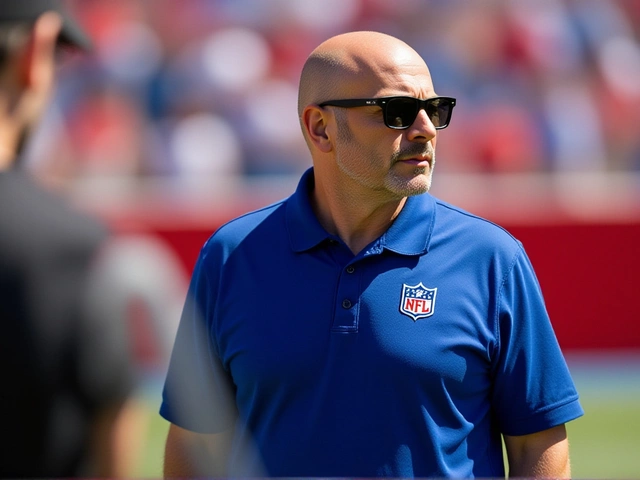When Hunter S. Thompson, famed "gonzo" journalist and author, was found dead on February 20, 2005, the Colorado authorities ruled the case a suicide.
Now, on September 30, 2025, the Colorado Bureau of Investigation announced it is reopening the investigation at the urging of his widow, Anita Thompson, and the suggestion of Michael Buglione, sheriff of Pitkin County Sheriff's Office. The decision signals a fresh look at a case that has lingered in the public imagination for two decades.
Background: The Life and Death of a Gonzo Legend
Born in Louisville, Kentucky, in 1937, Hunter S. Thompson became synonymous with immersive, first‑person reporting. His 1971 book Fear and Loathing in Las Vegas cemented his place in American letters, and his later works, including Hell's Angels and Fear and Loathing on the Campaign Trail '72, shaped a whole genre.
Thompson moved to Woody Creek, Colorado in the early 1990s, where he built a modest cabin and continued to write, drink, and entertain locals with his razor‑sharp wit. On the morning of February 20, 2005, deputies responding to a 911 call found his body on the cabin’s porch, a single firearm wound to the head. The coroner’s report listed the cause as a self‑inflicted gunshot, and the sheriff’s office closed the file as a suicide.
Why a New Review Now?
According to statements released by the CBI, the review is not driven by any newly uncovered forensic evidence. Instead, it serves an "independent perspective" requested by Anita Thompson, who says lingering questions about the original investigation still haunt the family.
"We understand the profound impact Hunter S. Thompson had on this community and beyond," Sheriff Buglione said in a press conference. "By bringing in an outside agency for a fresh look, we hope to provide a definitive and transparent review that may offer peace of mind to his family and the public."
The CBI’s involvement means the case will receive resources that local law enforcement may lack, such as advanced ballistics analysis, digital forensics, and access to state‑wide databases. While there is "no new evidence suggesting foul play," officials stress that the review will scrutinize every piece of the original file, from the autopsy photos to the sheriff’s office interview transcripts.
Statements from the Key Players
"I’ve always believed the investigation was thorough," said Michael Buglione, adding that the review is about "accountability and closure, not a reopening of a closed case."
Meanwhile, Anita Thompson expressed both relief and apprehension. "It’s been twenty years, and I still hear people whisper about what really happened," she told reporters. "I’m not looking for scandal; I just want the truth, however it may look, to be recognized officially."
The CBI’s spokesperson, Laura McPherson, confirmed that the agency will issue a public report once the review is complete, though she declined to set a deadline, noting the process could take "months or even years, depending on what the evidence reveals."
What the Review Could Uncover
Experts in forensic pathology suggest a modern re‑examination might involve:
- High‑resolution 3‑D scanning of the firearm and wound trajectory.
- Re‑analysis of gunshot residue (GSR) on Thompson’s hands using newer detection methods.
- Digital reconstruction of any phone or computer activity leading up to the death, which was not a focus in 2005.
Criminologist Dr. Elena Ruiz of the University of Colorado notes that "even well‑documented cases can benefit from advances in technology." She cautions, however, that "the most likely outcome is a confirmation of the original findings, but the process itself restores public confidence."
Broader Significance: Transparency in High‑Profile Cases
This review arrives at a time when Americans are demanding more openness from law enforcement, especially in cases involving public figures. The CBI’s decision may set a precedent for other states to revisit older investigations when families request it.
Local residents of Woody Creek have mixed feelings. Some see it as a respectful gesture toward a beloved neighbor; others worry the spotlight could reopen old wounds. "Hunter was part of the fabric of our town," said longtime neighbor Carla Mendoza. "If this helps his family sleep better at night, I’m all for it."
What Comes Next?
The CBI will begin by cataloguing all existing evidence, then conduct supplementary interviews with anyone who was present that night, including the deputies who first responded. A timeline of the investigation’s milestones is expected to be posted on the agency’s website.
Until a final report is issued, the case remains technically "open," though day‑to‑day law enforcement activities continue as normal. Regardless of the outcome, the review underscores a growing belief that every death—no matter how high‑profile—deserves a thorough, transparent accounting.

Frequently Asked Questions
How does the review affect Hunter S. Thompson's family?
The review offers Anita Thompson a formal avenue to address lingering doubts. While it may not change the official cause of death, a thorough, public report can provide the family with documented closure and potentially settle public speculation.
What prompted Anita Thompson to request a review after so many years?
Anita has said friends and journalists continue to question the 2005 findings. The rise of digital forensic tools and the recent emphasis on transparency in law‑enforcement investigations convinced her that a fresh, independent look could finally settle the matter.
Could the new review change the official cause of death?
Legally, the cause could be revised only if new evidence contradicts the original autopsy. Most experts think the advanced testing will likely reaffirm suicide, but the official record can be amended if the forensic analysis uncovers inconsistencies.
What is the role of the Colorado Bureau of Investigation in this case?
The CBI serves as an impartial state agency that can access resources beyond the local sheriff’s office, including specialized forensic labs and statewide data repositories. Its mandate here is to conduct a "fresh, independent perspective" and produce a public report.
When can the public expect the review findings?
No firm deadline has been set. Officials estimate the process could take anywhere from several months to a couple of years, depending on the depth of the forensic re‑examinations and the time needed to interview witnesses.





